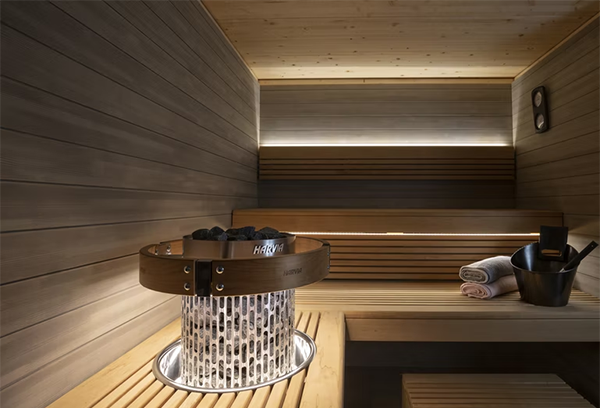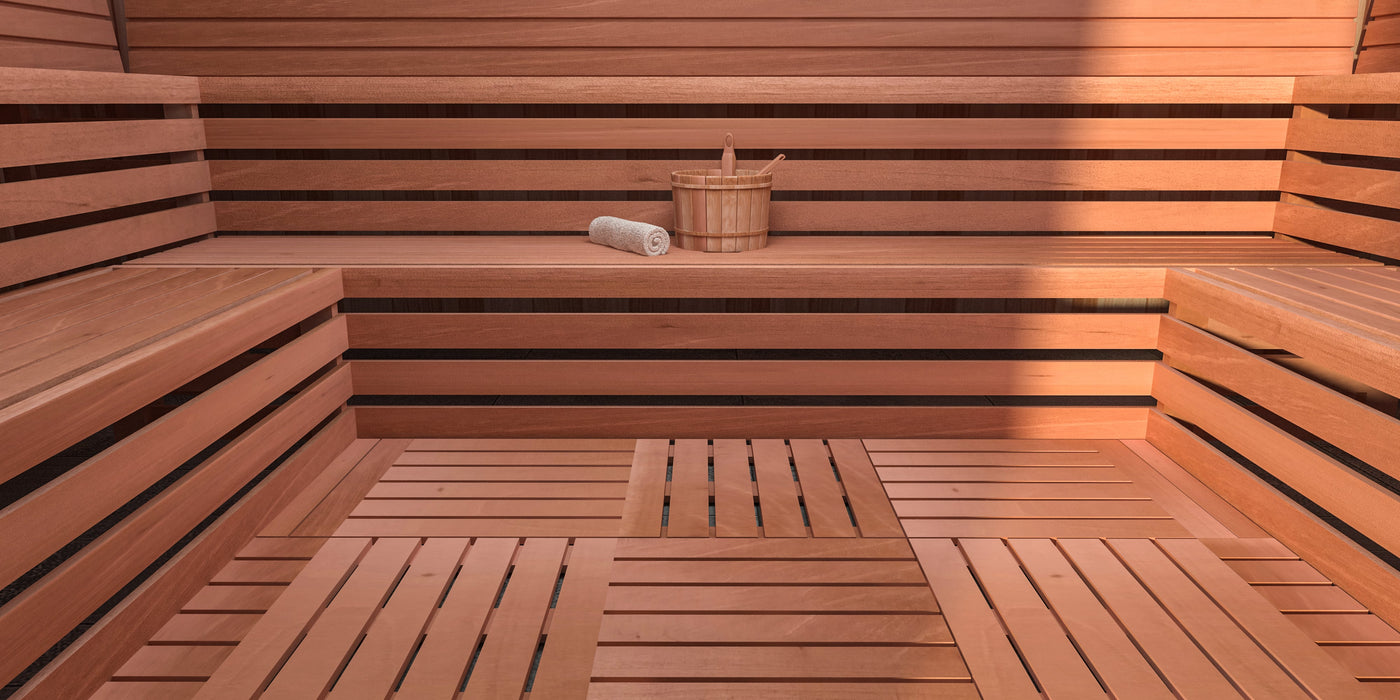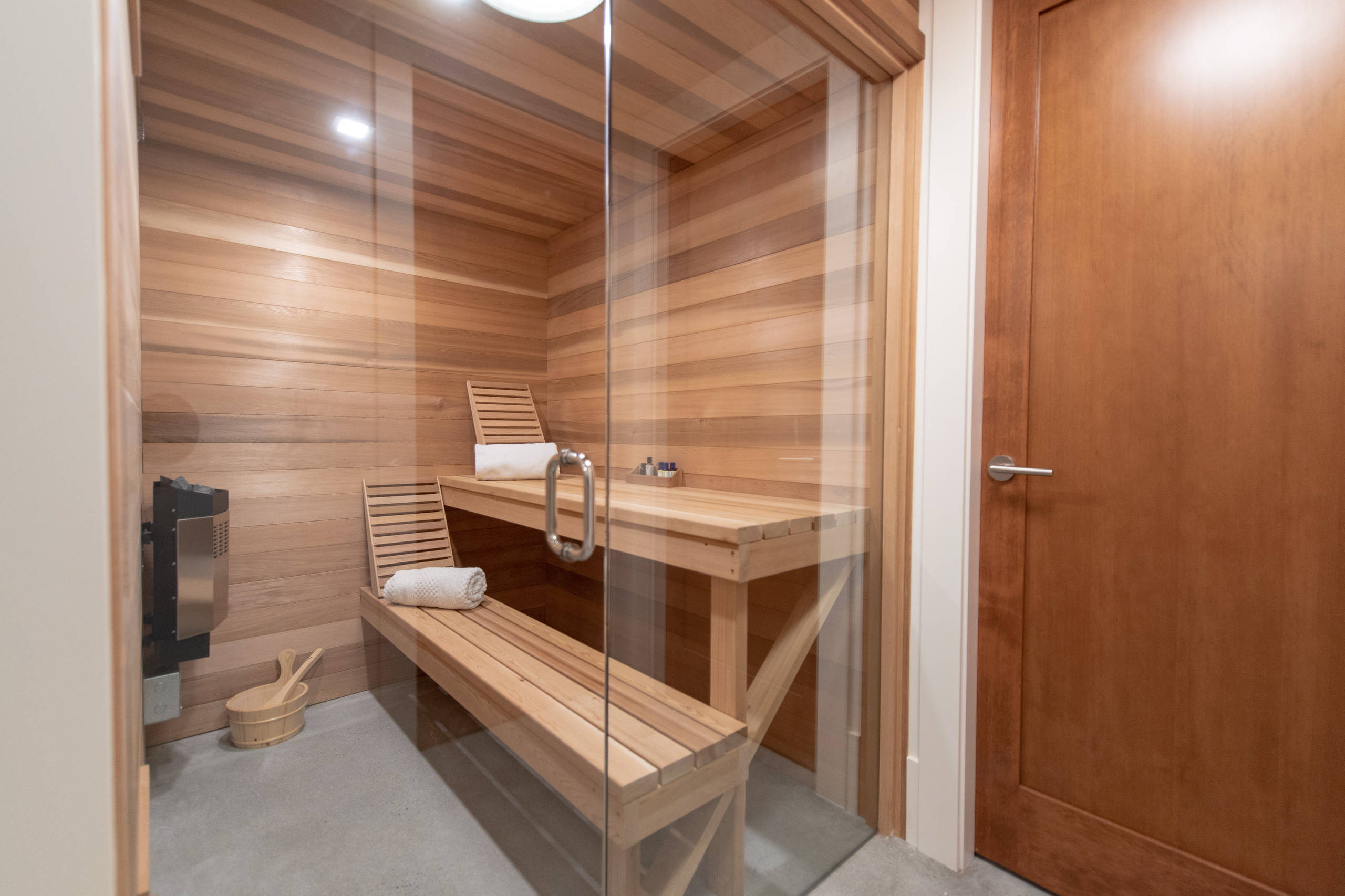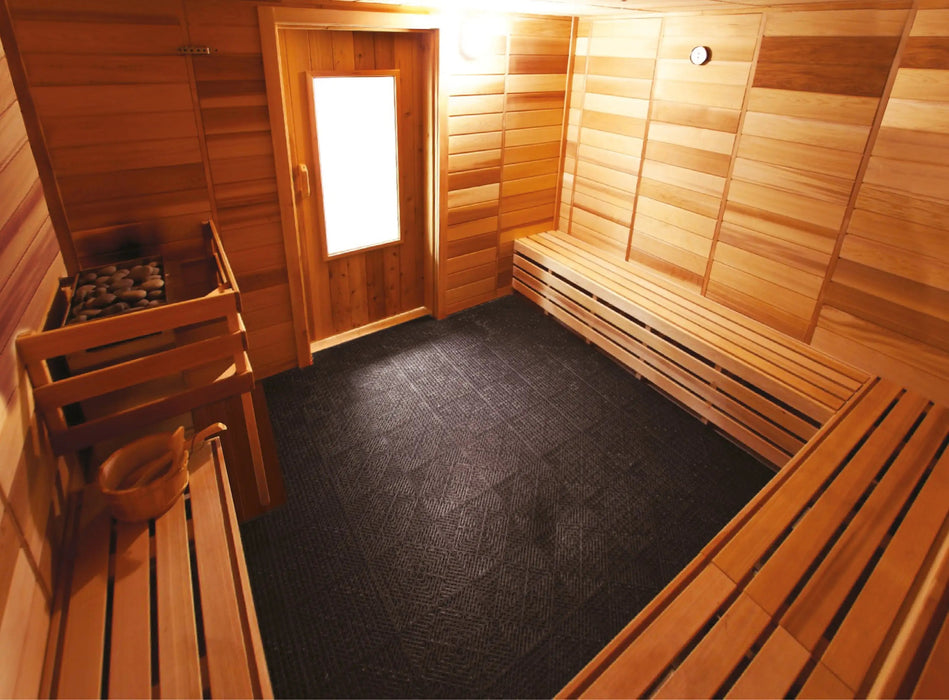¿Cuál es el mejor material para el suelo de mi sauna?
Construir una sauna es una manera fantástica de crear un oasis personal para relajarse y obtener beneficios para la salud. Una decisión crucial que deberá tomar durante este proceso es seleccionar el mejor material para el suelo . La elección correcta garantiza comodidad, seguridad, durabilidad y facilidad de mantenimiento. Analicemos las distintas opciones de suelos y le ayudaremos a tomar una decisión informada.
¿Quieres que diseñemos tu sauna completa gratis (y te proporcionemos todos los materiales)?

Por qué es importante el suelo de una sauna
El suelo de una sauna no solo es una cuestión estética, sino que también desempeña un papel importante en la experiencia general de la sauna. A continuación, le explicamos por qué:
-
Seguridad: El piso debe soportar altas temperaturas y humedad sin volverse resbaladizo.
-
Durabilidad: Debe soportar un uso frecuente y resistir el desgaste.
-
Comodidad: Una superficie cómoda mejora la relajación.
-
Mantenimiento: Los pisos fáciles de limpiar garantizan higiene y longevidad.
Las mejores opciones de suelos para su sauna
Ventajas:
-
Aislante natural: el cedro retiene el calor de manera eficiente, proporcionando una temperatura de sauna constante.
-
Aromático: El agradable aroma mejora la experiencia de la sauna.
-
Resistente a la descomposición: el cedro es naturalmente resistente a la humedad y la descomposición.
-
Desmontables para limpieza: estos paneles de madera se pueden quitar para facilitar la limpieza.
Contras:
-
Costo: El cedro puede ser más caro en comparación con otras opciones de madera.
-
Suavidad: Es una madera más blanda, lo que puede provocar abolladuras y rayaduras con el tiempo.
Ideal para: Saunas tradicionales en las que se valora la experiencia estética y aromática.

Ventajas:
-
Durabilidad: El proceso de modificación térmica aumenta la resistencia de la madera a la humedad y las plagas.
-
Estabilidad: Menos propenso a deformarse y encogerse debido a los cambios de humedad.
-
Respetuoso del medio ambiente: tratado sin productos químicos, lo que lo convierte en una opción más ecológica.
Contras:
-
Permanente: Generalmente es necesario atornillarlo, lo que significa que no es necesario limpiarlo por debajo.
-
Potencialmente resbaladizo : Dependiendo del diseño que cree, puede resultar resbaladizo para los pies.
-
Costo: Un poco más caro debido al proceso de modificación.
Ideal para: Saunas en ambientes húmedos o para quienes buscan una opción ecológica.

3. Hormigón
Ventajas:
-
Durabilidad: Extremadamente resistente y duradero.
-
Personalizable: se puede teñir, pulir o texturizar según sus preferencias.
-
Retención de calor: mantiene bien el calor, contribuyendo a la calidez general de la sauna.
Contras:
-
Superficie fría: puede estar incómodamente fría antes de calentarse.
-
Dureza: Muy dura bajo los pies, lo que puede reducir la comodidad.
Ideal para: saunas modernas con una estética minimalista o para quienes buscan una opción duradera y de bajo mantenimiento.

4. Azulejos cerámicos
Ventajas:
-
Variedad: Disponible en numerosos estilos, colores y diseños.
-
Fácil de limpiar: Resistente a las manchas y a la humedad, lo que hace que sean fáciles de mantener.
-
Durabilidad: Muy duradero y puede soportar altas temperaturas y humedad.
Contras:
-
Resbaladizo: Puede volverse resbaladizo cuando está mojado, lo que representa un peligro para la seguridad.
-
Instalación: Requiere instalación profesional para obtener mejores resultados.
Ideal para: Saunas con énfasis en la variedad estética y la facilidad de limpieza.

Ventajas:
-
Asequibilidad: Generalmente más económico que la madera o las baldosas.
-
Comodidad: Más suave bajo los pies en comparación con el hormigón o las baldosas.
-
Variedad: Disponible en muchos diseños, incluidas opciones con apariencia de madera.
Contras:
-
Sensibilidad al calor: No es tan resistente al calor como otros materiales; puede deformarse con el tiempo.
-
Vida útil: Generalmente tiene una vida útil más corta en comparación con la madera o la baldosa.
Ideal para: saunas domésticas con un presupuesto limitado o para quienes buscan una opción de suelo suave y cómoda.

Cómo elegir el material adecuado para su sauna
A la hora de seleccionar el mejor material para el suelo de su sauna, tenga en cuenta los siguientes factores:
-
Presupuesto: determina cuánto estás dispuesto a gastar. La madera y las baldosas suelen ser más caras, pero ofrecen durabilidad y atractivo estético.
-
Mantenimiento: Piensa en cuánto tiempo quieres dedicar a limpiar y mantener el piso.
-
Seguridad: Priorizar superficies antideslizantes para evitar accidentes.
-
Estética: considere el aspecto general que desea lograr en su sauna.
-
Comodidad: Elija un material que se sienta bien bajo los pies y mejore su experiencia de relajación.
Consejos de instalación y mantenimiento
-
Instalación profesional: para materiales como baldosas y hormigón, la instalación profesional garantiza una instalación segura y duradera.
-
Limpieza periódica: mantenga limpio el piso de su sauna para evitar la acumulación de moho y bacterias.
-
Inspeccione si hay daños: revise periódicamente si hay signos de desgaste, especialmente en pisos de madera, y realice las reparaciones necesarias rápidamente.
Preguntas frecuentes
P: ¿Puedo utilizar madera normal para el suelo de mi sauna? R: La madera normal puede deformarse y deteriorarse debido al calor y la humedad elevados de una sauna. Es mejor utilizar madera tratada específicamente o naturalmente resistente a estas condiciones, como el cedro o la madera modificada térmicamente .
P: ¿Los pisos de vinilo son una buena opción para una sauna comercial? R: El vinilo puede funcionar en saunas domésticos, pero puede no ser lo suficientemente duradero para saunas comerciales con un uso intensivo.
P: ¿Con qué frecuencia debo limpiar el suelo de mi sauna? R: Limpie el suelo de su sauna después de cada uso para mantener la higiene y evitar la formación de moho.
Reflexiones finales
Seleccionar el mejor material para el suelo de su sauna es esencial para crear un espacio de relajación seguro, cómodo y duradero. Cada material tiene sus propias ventajas y desventajas, por lo que debe tener en cuenta sus necesidades, preferencias y presupuesto específicos al hacer su elección. Con el suelo adecuado, su sauna puede convertirse en un refugio personal perfecto durante muchos años.











Dejar un comentario